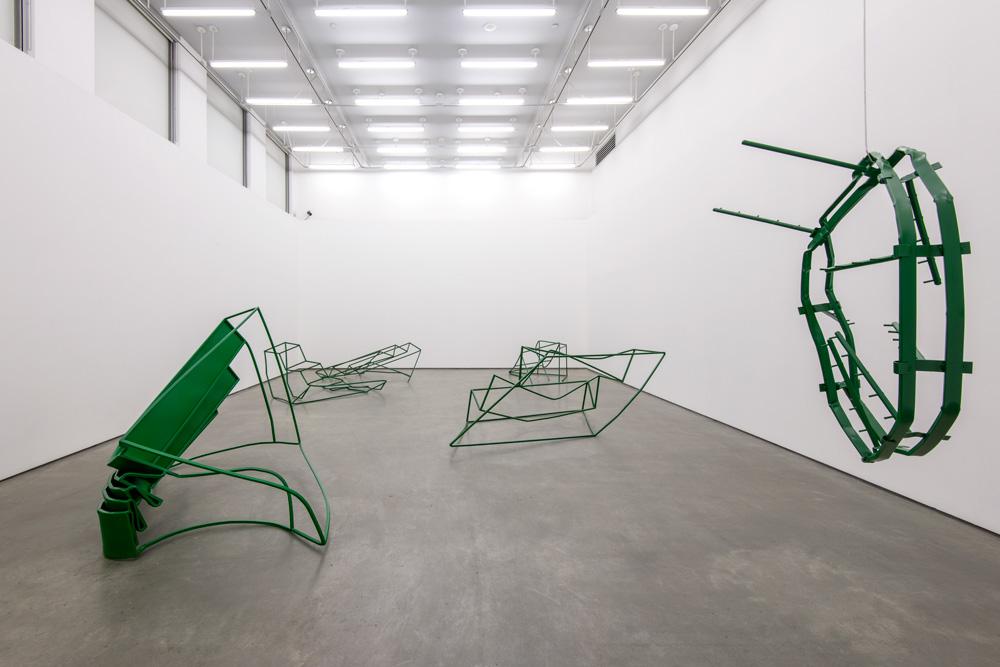The summer is quickly drawing to a close, and it’s the final week of Polish artist Monika Sosnowska’s exhibition at Vancouver’s Contemporary Art Gallery. Sosnowska has already participated in numerous major international exhibitions, but this is her first solo show in Canada. The exhibition is modest in size, taking up one of the CAG’s exhibition spaces, and presented in collaboration with the Southern Alberta Art Gallery. It will soon travel to Lethbridge for its second showing in September.
Well known for her installations and sculptures that present dramatic spatial propositions, Sosnowska makes reference to existing architectures and their implicit ideologies. The artist garnered praise for her project 1:1 at the Venice Biennale in 2007, an installation of an enormous black-steel frame based on postwar models of estate housing from Poland. The installation’s frame was bent to fit within the confines of the pavilion’s more-than-70-year-old architecture, its awkward manipulations and industrial materials wrestling with the building’s classical structure. Typical for Sosnowska, the work drew on Modernist utilitarian architecture to take a closer look at the dramatic reshaping of space that has taken place in Eastern Europe since the collapse of communism.
For her exhibition at the CAG, Sosnowska presents six newer steel sculptures that refer similarly to Polish architecture, but without the dwarfing effect of her Venice work. Here, each sculpture is a self-contained frame whose geometric form is bent and then finished with an industrial-green lacquer. The works evoke something between Minimalist sculpture and discarded urban structures; it is as if they have been vandalized, their elementary structures taken apart and kicked in. Their scale and number dominate the gallery space, forcing one to navigate multiple perspectives, and to note the play of line that mutates and animates the works. Seemingly banal shapes reminiscent of everyday architecture have been imbued with an afterlife that becomes an index to lost fragments of history.
In fact, each sculpture is a replica of a market-vendor stand from Warsaw’s Jarmark Europa, once one of Europe’s largest open-air multicultural markets, opened in 1989 at Jamark stadium. The market is now extinct along with the stadium, which was demolished to build a new stadium for the 2012 European football championships. Sosnowska’s sculptures in a gallery context serve as a kind of commemoration. Polish postwar Modernist architecture is treated, in Sosnowska’s opinion, as an unfortunate icon of communism. Authorities tear down structures in favour of new and, lamentably, often poorly constructed buildings.
These sculptures are not an architectural proposition. They activate the dynamic production of space by local communities, and recognize its destruction in the name of a certain model of progress related to Poland’s entrance into the EU. Sosnowska’s work dismantles the layers of social and political relations behind Jarmark Europa’s makeshift architecture, creating a performative environment that prompts questions about Poland’s social transformations. In the context of Vancouver, Sosnowska’s work is part of an ongoing conversation around the unrelenting development of the downtown east side, and the many community activities lost in the demolition of supposedly purposeless buildings.
But Sosnowska’s commemoration is a subtle one. At its most basic it is beautifully conceived— a set of sculptures that, referents aside, is formally compelling in its own right.









